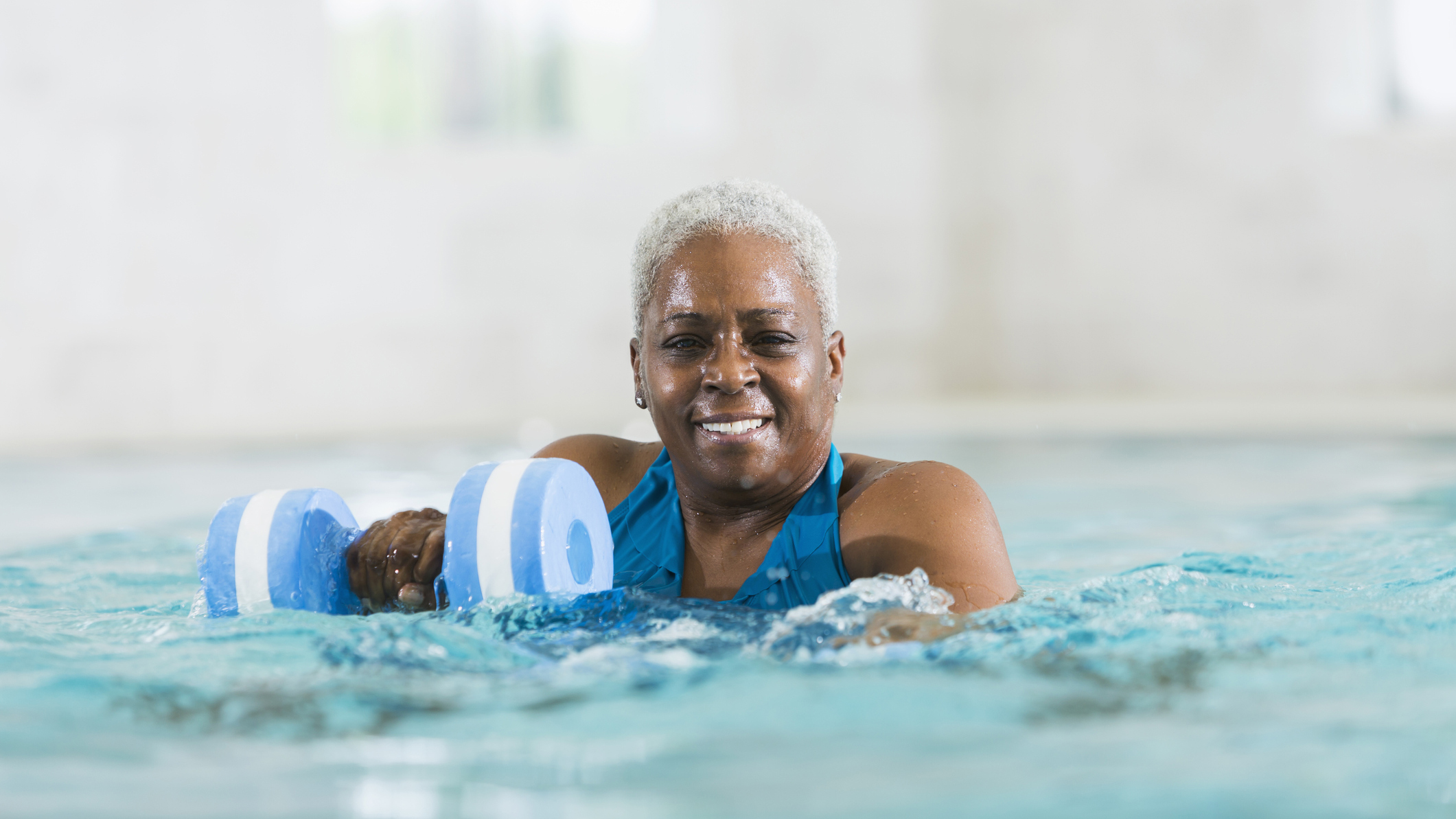The health benefits of swimming are well known. It’s a full-body workout that burns a bunch of calories while toning and strengthening. Hitting the pool also aids flexibility and is low-impact, making it ideal for seniors and those who are recovering from injury. Swimming has plenty of other benefits and may also be one of the best forms of physical exercise for reducing stress.
If you have invested in one of the best swim spas, adding a few specialized swim spa exercises to your exercise routine means you can reap all of these benefits plus a few more you won’t get from swimming in a pool. Some brands even provide special flooring for running and other types of swim spa exercises. Ready to get moving? Let’s take a look at how you can do just that…
Swim spa exercises to try now
Swim spas aren’t just for swimming in. They can be used for hydrotherapy, too, as well as a range of activities you might not necessarily associate with a pool of water. Dr Rick McAvoy is a personal trainer and researcher in the field of aquatic therapy and fitness. Dr Rick is a fan of functional training, a form of exercise that simulates movements we make every day when we’re not in the pool or gym.
Usually this means pushing, pulling and twisting for the upper body, and movements that compliment walking, running and picking things up for the lower body. The idea is that gains made in functional training transfer to everyday activities, making you stronger and more efficient in your movement, and therefore less prone to injury.
The swim spa exercises below will help to get you in shape for all that life might throw at you.
Exercise 1: Bilateral Squat
With many of us spending up to 12 hours a day sitting down, you could argue that the squat is the functional exercise with the most crossover into our daily lives.
Dr Rick recommends you start the squatting movement by hinging your hips back and down towards the ground. This replicates how you would ease yourself into a chair and activates some of the biggest muscles in your body: the glutes and hamstrings.
Keep your weight spread equally over your heels and the balls of your feet, and don’t let your knees collapse in towards each other as you squat down.
In the following video, Dr Rick shows you how to perform a bilateral squat:
Exercise 2: Single-Leg Squat
Dr Rick likes to progress his clients from the bilateral squat to the single-leg squat. Hinging your hip on one side as you drop your butt to the ground with your opposite leg raised out in front of you has two advantages over the two-legged version.
First, taking all of your weight on one leg increases the load on it, creating more resistance than the bilateral squat. This can lead to more gains in strength and muscle mass. Second, using only one leg to squat is a balancing act that forces your leg and core to stop you from toppling over.
If you find maintaining your balance too difficult, it’s fine to use one hand to hold onto the side of your spa.
Exercise 3: Push Pull
This exercise will work a bunch of muscles in your arms, chest, shoulders and upper back, with its push-pull motion that translates well into everyday tasks. It’s best done with a kickboard or a pair of aquatic bells (typically dome-shaped devices used for resistance training in water).
Dr Rick recommends performing the push pull with a split stance, with one leg in front of your body and the other slightly behind. Make sure you keep your core engaged and use as much force while pulling as you do while pushing so your back and biceps get as much work as your chest and triceps.
Here's Dr Rick explaining how to perform a push pull, and why foundational movements are important:
Exercise 4: Shallow Water Running
Shallow water running is running in water that’s shallow enough for your feet to touch the bottom with your head above water. Why bother running in your swim spa when you could run, well, anywhere? “The water's hydrostatic pressure is very powerful,” says Dr Rick. “It causes the heart to function more efficiently and provides increased resistance on the chest to help strengthen breathing muscles for an improved workout.”
Running against the flow of your swim spa’s jets will increase the challenge of your runs. Dr Rick recommends one of Master Spas’ Michael Phelps Signature Swim Spas, which have special flooring that’s suited for running.
Exercise 5: (Plain Old) Swimming
Of course you’ll want to use your swim spa for what it was designed for – swimming! Swimming is great for conditioning as well as strengthening your arms and core. By making squats part of your exercise routine (see above), you’ll give your legs and glutes a good workout, too, making your overall regimen well balanced.
Swimming in a swim spa feels different from swimming in a pool. The resistance created by your spa’s jets makes the experience more like training in a river or sea. Having to adjust your body position and maintain a tight core will make your workouts more challenging, improving your cardiovascular conditioning and burning loads of calories.
Do you need to warm up beforehand?
Although water is naturally more supportive than dry land (its buoyancy and resistance reduce the effects of gravity and help improve the flexibility and mobility of your joints), aquatic fitness experts like Dr Rick still recommend that you complete a full warm-up before you work out.
“[My clients] begin with light aerobic, non-fatiguing activity designed to just heat up the body – movements such as walking forwards, backwards and sideways, light jogging forwards and backwards, high knee marches, side shuffles and butt kickers," says Dr Rick.
“Next, we move onto upper body and lower body flexibility/mobility movements and, finally, core activation exercises to prep the body to get going.” According to Dr Rick, you should spend 5-15 minutes on your warm-up.
Looking for more fitness content? We'd recommend our guides to the best home gyms for weight training, and the best elliptical machines for full body workouts.

